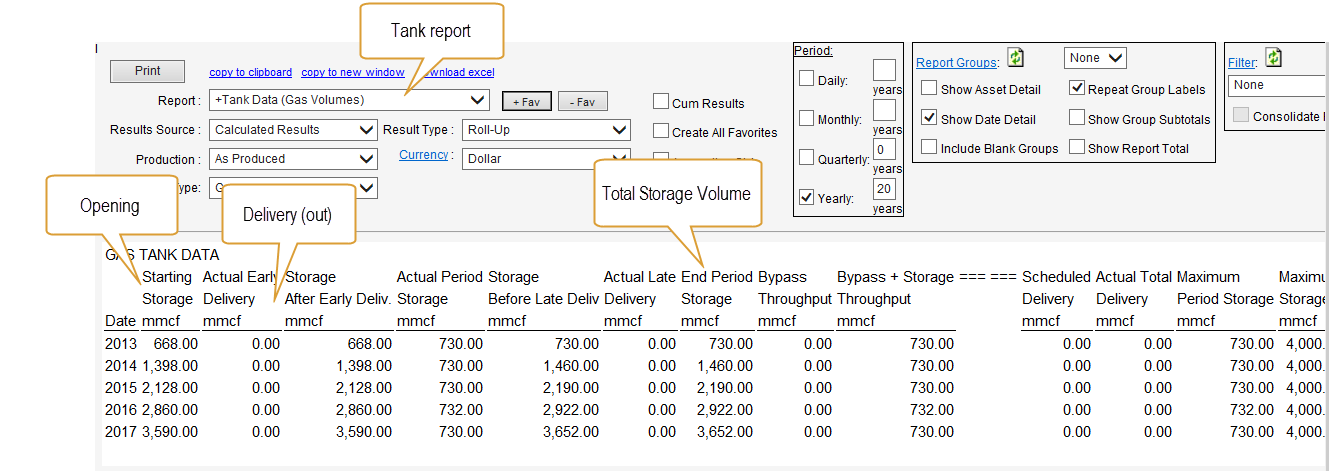Tank modelling can be used to model production to storage tanks, water storage (ponds), gas storage, or even LNG tankers. Tanks are created via the tank data input.
To setup a tank, select the tank (any asset) and edit its constraints.

To add the tank, click the Add Tank Data button.
This will create the tank with a number of options:

Click image to expand or minimize.
- Effective Date– The date that this line of data is effective. Multiple date lines can be added
- Product– Which product is being stored (Tanks can store oil, gas, or water)
- Opening Balance– How much volume is in the tank at the effective Date
- Maximum Total Storage Volume– How much the tank holds when full. When it is full, the effective constraint will be zero
- Maximum Period Storage Rate– Maximum rate that the product can enter storage. This could be a wellbore, or pipeline constraint. This can be changed from a rate to a volume or vice-versa by clicking on the units (mcf/d).
- Delivery Schedule– Either at the start of the month (or day in daily mode) or end.
- Delivery Period– How often to the deliveries take. This would usually be set to every month for a monthly model.
- Period Delivery Volume– How much is delivered in the period. This can be changed from a rate to a volume or vice-versa by clicking on the units (mcf/d). For a gas storage reservoir, the delivery rate would be a function of tank volume. The tank volume can be referenced in a function by using the functions @TankData() or TankDataDaily()
- Evaporation Period– How often to the Evaporation occurs. This would usually be set to every month for a monthly model.
- Period Evaporation Volume– How much is evaporation in the period. This can be changed from a rate to a volume or vice-versa by clicking on the units (mcf/d). Evaporation might occur for a water pond.
The following example models a gas storage reservoir:
- Opening volume: 0
- Maximum Storage Volume: 4000 mmscf (4 bcf)
- Maximum Storage rate: 2 mscf/d (2,000 mmscf/d)
- Total Field Potential
Enersight use a virtual network to model the tank. If the option "Expand Temporary Calculation Assets" is checked, these assets will be drawn on your network. To remove them, uncheck the option and re-calculate.

Click image to expand or minimize.

Click image to expand or minimize.
To check the results of the tank model, you need to use the appropriate tank report, "Tank Data" (Gas, Water or Oil). If you do not see these reports, contact Enersight support and they will be added to your companies’ database.
Tank Model reporting

Click image to expand or minimize.
In the above example, the storage approaches the maximum tank volume (4 bcf), but does not hit it. In this model, when the storage is full, the field would be shut in.
